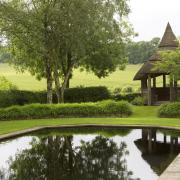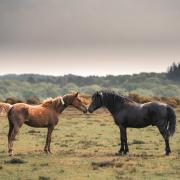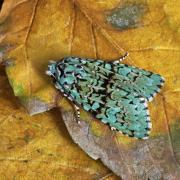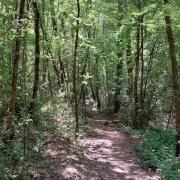If you're on the look out for unusual species this spring, then a trip to Basingstoke Canal won't disappoint
From April, some of nature’s most colourful insects can be spotted darting around Hampshire’s riverbanks, canals, ditches, ponds and lakes. Collectively known as odonata (meaning ‘tooth-jaw’), dragonflies and their smaller relative, damsonflies, are most active in the warmer, sunnier months. These delicate creatures feature lacy wings and metallic bodies, to stage impressive acrobatic displays.
Keep a keen eye out for the incredible invertebrates over any area of wetland. Dragonflies are among Britain’s largest, with eyes that meet in the middle of their spherical head. They are fast flyers, with some able to travel at a speedy 15 metres a second. Damselfies, on the other hand, are more delicate, with eyes on each side of their rectangular head, and with front and back wings of equal size. Both species thrive in clean, unpolluted waters which provides plant life, places to lay eggs, and shelter.

A survey on the Basingstoke Canal last summer recorded an incredible 29 types of dragonflies and damselfly, suggesting it is home to significant and thriving colonies. The entomologists undertaking the survey noted rarer species including the Variable Damselfly and the Brilliant Emerald Dragonfly. The Common Darter, which has seen declining numbers across the UK, was also abundant on the canal.
Although this appears as good news for dragonflies and damsonflies, bucking the trend of declines seen in other species, it is also another potential indicator of climate change. As a mainly tropical group of insects, most dragonflies will benefit from rising average temperatures, which has wider implications for our native ecosystems and habitats. Another study has also suggested that warmer weather patterns could be causing some male dragonflies across the world to lose their ‘wing bling’ with dark patches on wings disappearing in response to rising temperatures to keep the insects cooler. The markings are critical to attract potential mates and intimidate rivals.
Monitoring nature helps us to understand the impacts of a changing environment to help species to survive. There are many opportunities to get involved in nature conservation in your spare time, including survey counts. Visit Hampshire County Council’s hants.gov.uk/thingstodo/countryside/get-involved/volunteering for more information.

About the author
James Taylor is the Strategic Manager of Basingstoke Canal with Hampshire County Council’s Countryside Service. The service looks after many of Hampshire’s major country parks and National Nature Reserves, as well as some heritage monuments, local recreational spaces, and large areas of common land. It also manages Hampshire’s 3,000 miles of public rights of way. The Basingstoke Canal is jointly overseen jointly by Hampshire and Surrey County Councils.



























